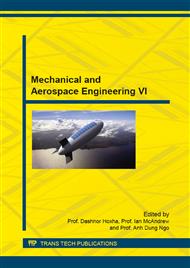p.3
p.8
p.15
p.20
p.25
p.30
p.36
p.41
Teaching Industrial Robot Manipulators by Easy to Use Interface Systems
Abstract:
The need for simple and safe teaching methods for robot manipulators need to be considered because: 1) Small size robots presence in everyday life environments is increasing requiring non-experts operators to teach the robot; 2) In small applications, the operator has to teach several different motions in a short time. In this paper, we evaluate the performance of three teaching systems for robot manipulators which utilize the following devices 1) i-phone; 2) haptic and 3) kinect. In difference from previous force sensor based teaching, proposed systems are safe because the operator keeps the distance with the robot. The performance is compared in terms of time to complete the task and accuracy. The results of 10 non-experienced subjects show the advantages of one method over the others.
Info:
Periodical:
Pages:
3-7
Citation:
Online since:
October 2015
Authors:
Price:
Сopyright:
© 2015 Trans Tech Publications Ltd. All Rights Reserved
Share:
Citation:


